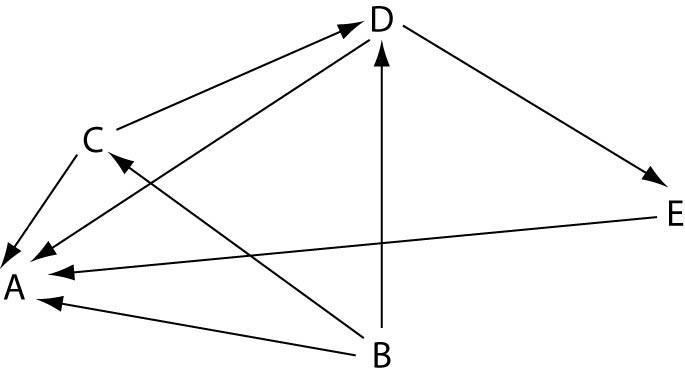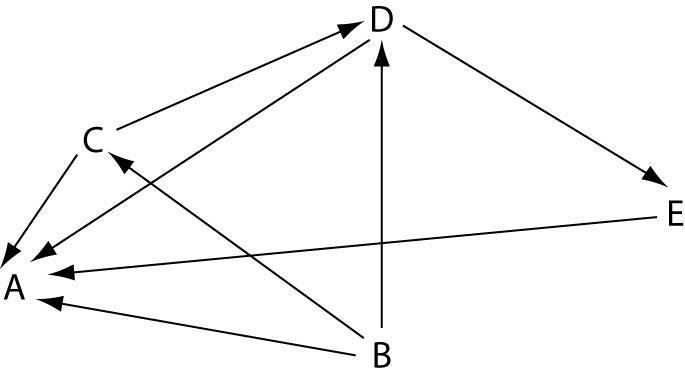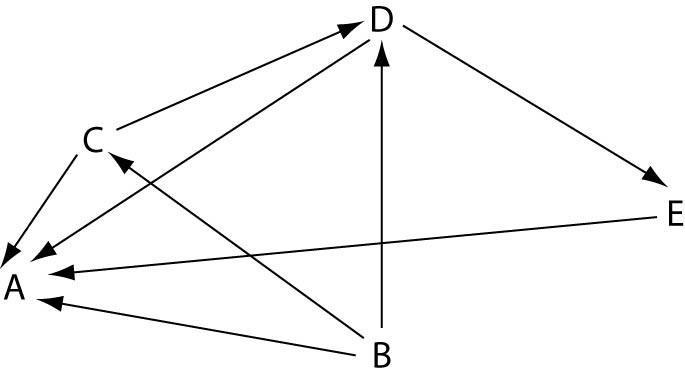Strong competition can lead to _________ _________, local elimination of a competing species.
competitive exclusion
__________ _________, or camouflage, makes prey difficult to spot.
cryptic coloration
Animals with effective chemical defense often exhibit bright warning coloration, called __________ _________.
aposematic coloration
__________ mimicry: a harmless species mimics a harmful one.
Batesian
________ mimicry: two unpalatable species mimic each other.
Müllerian
In _________, one organism, the parasite, derives nourishment from another organism, its host, which is harmed in the process.
parasitism
________ is an interspecific interaction that benefits both species.
mutualism
__________: the relation between two different kinds of organisms when one receives benefits from the other without damaging it.
Commensalism
________ __________ is the total number of different species in the community.
Species richness
________ _________ of a community is the variety of organisms that make up the community.
Species diversity
_________ _________ is the proportion each species represents of the total individuals in the community.
Relative abundance
__________ _________ is the feeding relationships between organisms in a community. It is a key factor in community dynamics.
Trophic structure
_________ _________ are those that are most abundant or have the highest biomass.
Dominant species
_________ ________ are not necessarily abundant in a community.
keystone species
Some ________ _______ act as facilitators that have positive effects on survival and reproduction of some other species in the community.
foundation species
The __________ model of community organization proposes a unidirectional influence from lower to higher trophic levels. In this case, presence or absence of mineral nutrients determines community structure, including abundance of primary producers.
bottom-up
The ______ model proposes that control comes from the trophic level above.
top-down
Which of the following statements is consistent with the principle of
competitive exclusion?
A) Bird species generally do not compete
for nesting sites.
B) The random distribution of one competing
species will have a positive impact on the population growth of the
other competing species.
C) Two species with the same
fundamental niche will exclude other competing species.
D) Even
a slight reproductive advantage will eventually lead to the
elimination of the less well adapted of two competing species.
E) Natural selection tends to increase competition between
related species.
Answer: D
According to the competitive exclusion principle, two species cannot
continue to occupy the same
A) habitat.
B) niche.
C)
territory.
D) range.
E) biome.
Answer: B
Which of the following is an example of cryptic
coloration?
A) bands on a coral snake
B) brown or
gray color of tree bark
C) markings of a viceroy butterfly's
wings
D) colors of an insect-pollinated flower's petals
E)
a "walking stick" insect that resembles a twig
Answer: E
Which of the following is an example of Müllerian
mimicry?
A) two species of unpalatable butterfly that
have the same color pattern
B) a day-flying hawkmoth that looks
like a wasp
C) a chameleon that changes its color to look like a
dead leaf
D) two species of rattlesnakes that both rattle their
tails
E) two species of moths with wing spots that look like
owl's eyes
Answer: A
Which of the following is an example of Batesian
mimicry?
A) an insect that resembles a twig
B) a
butterfly that resembles a leaf
C) a nonvenomous snake that
looks like a venomous snake
D) a fawn with fur coloring that
camouflages it in the forest environment
E) a snapping turtle
that uses its tongue to mimic a worm, thus attracting fish
Answer: C
Which of the following is an example of aposematic coloration?
A) stripes of a skunk
B) eye color in humans
C)
green color of a plant
D) colors of an insect-pollinated flower
E) a katydid whose wings look like a dead leaf
Answer: A
Dwarf mistletoes are flowering plants that grow on certain forest
trees. They obtain nutrients and water from the vascular tissues of
the trees. The trees derive no known benefits from the dwarf
mistletoes. Which of the following best describes the interactions
between dwarf mistletoes and trees?
A) mutualism
B)
parasitism
C) commensalism
D) facilitation
E) competition
Answer: B
Evidence shows that some grasses benefit from being grazed. Which of
the following terms would best describe this plant-herbivore
interaction?
A) mutualism
B) commensalism
C)
parasitism
D) competition
E) predation
Answer: A
Which of the following would be most significant in understanding the
structure of an ecological community?
A) determining how many
species are present overall
B) determining which particular
species are present
C) determining the kinds of interactions
that occur among organisms of different species
D) determining
the relative abundance of species
E) determining how many
species are present overall, which particular species are present, the
kinds of interactions that occur among organisms of different species,
and the relative abundance of species
Answer: E
Which of the following studies would a community ecologist undertake
to learn about competitive interactions?
A) selectivity of nest
sites among cavity-nesting songbirds
B) the grass species
preferred by grazing pronghorn antelope and bison
C) nitrate and
phosphate uptake by various hardwood forest tree species
D)
stomach analysis of brown trout and brook trout in streams where they
coexist
E) selectivity of nest sites among cavity-nesting
songbirds, the grass species preferred by grazing pronghorn antelope
and bison, nitrate and phosphate uptake by various hardwood forest
tree species, and stomach analysis of brown trout and brook trout in
streams where they coexist
Answer: E
White-breasted nuthatches and Downy woodpeckers both eat insects that
hide in the furrows of bark in hardwood trees. The Downy woodpecker
searches for insects by hunting from the bottom of the tree trunk to
the top, whereas the white-breasted nuthatch searches from the top of
the trunk down. These hunting behaviors best illustrate which of the
following ecological concepts?
A) competitive exclusion
B)
resource partitioning
C) character displacement
D)
keystone species
E) bottom-up and top-down hypotheses
Answer: B
Monarch butterflies are protected from birds and other predators
because of cardiac glycosides they incorporate into their tissues from
eating milkweed when they were in their caterpillar stage. The wings
of a different species of butterfly, the Viceroy, look nearly
identical to the Monarch so predators that have learned not to eat the
bad-tasting Monarch avoid Viceroys as well. This example best
describes
A) aposmatic coloration.
B) cryptic coloration.
C) Batesian mimicry.
D) Müllerian mimicry.
E) mutualism.
Answer: C
Prairie dogs once covered the expanses of the Great Plains. Their
grazing made the grass more nutritious for the huge herds of bison,
and they were preyed upon by a variety of snakes, raptors, and
mammals. In fact, the black-footed ferret (now endangered) specialized
in prairie dog predation. Today, increases in housing and agricultural
developments have eradicated many prairie dog towns. Which of the
following statements about prairie dogs is true?
A) Their
realized niche has expanded.
B) They have a competitive
relationship with bison.
C) They are probably a poor candidate
for keystone species.
D) Their fundamental niche has been
compromised.
E) Their fundamental niche has expanded.
Answer: E
Which statement best describes the evolutionary significance of
mutualism?
A) Mutualism offers more biodiversity to a community.
B) Individuals partaking in a mutualistic relationship are more
resistant to parasites.
C) Interaction increases the survival
and reproductive rates of mutualistic species.
D) Mutualistic
interaction lessens competition in communities where it is present.
E) Mutualistic relationships allow organisms to synthesize and
use energy more efficiently.
Answer: C
How might an ecologist test whether a species is occupying its
realized or its fundamental niche?
A) Study the temperature
range and humidity requirements of the species.
B) Observe if
the niche size changes after the addition of nutritional resources to
the habitat.
C) Observe if the niche size changes after the
introduction of a similar non-native species.
D) Measure the
change in reproductive success when the species is subjected to
environmental stress.
E) Remove a competitor species to see if
the species expands its range.
Answer: E
Which of the following terms is used by ecologists to describe the
community interaction where one organism makes the environment more
suitable for another organism?
A) parasitism
B) mutualism
C) inhibition
D) facilitation
E) commensalism
Answer: D
How did Eugene Odum describe an ecological niche?
A) the
"address" of an organism
B) an entity that is
synonymous with an organism's specific trophic level
C) an
organism's "profession" in the community
D) the
organism's role in recycling nutrients in its habitat
E) the
interactions of the organism with other members of the community
Answer: C
Approximately how many kg of carnivore biomass can be supported by a
field plot containing 1,000 kg of plant material?
A) 10,000
B) 1,000
C) 100
D) 10
E) 1
Answer: D
In a tide pool, 15 species of invertebrates were reduced to eight
after one species was removed. The species removed was likely a(n)
A) pathogen.
B) keystone species.
C) herbivore.
D) resource partitioner.
E) mutualistic organism.
Answer: B
Elephants are not the most dominant species in African grasslands,
yet they influence community structure. The grasslands contain
scattered woody plants, but they are kept in check by the uprooting
activities of the elephants. Take away the elephants, and the
grasslands convert to forests or to shrublands. The newly growing
forests support fewer species than the previous grasslands. Which of
the following describes why elephants are the keystone species in this
scenario?
A) Essentially all of the other species depend on the
presence of the elephants to maintain the community.
B) Grazing
animals depend upon the elephants to convert forests to grassland.
C) Elephants prevent drought in African grasslands.
D)
Elephants are the biggest herbivore in this community.
E)
Elephants help other populations survive by keeping out many of the
large African predators.
Answer: A
Why are food chains relatively short?
A) Top-level feeders tend
to be more numerous than lower-trophic-level species.
B)
Top-level feeders tend to be small but are capable of conserving more
energy.
C) Longer chains are less stable and energy transfer
between levels is inefficient.
D) There are only so many
organisms that are adapted to feed on other types of organisms.
E) Food chain length is ultimately determined by the
photosynthetic efficiency of producers.
Answer: C
Which term do ecologists use to describe the ability of a community
either to resist change or to recover to its original state after
change?
A) stability
B) succession
C) partitioning
D) productivity
E) competitive exclusion
Answer: A
In a particular case of secondary succession, three species of wild
grass all invaded a field. By the second season, a single species
dominated the field. A possible factor in this secondary succession
was
A) equilibrium.
B) facilitation.
C) immigration.
D) inhibition.
E) parasitism.
Answer: D
Why do moderate levels of disturbance result in an increase in
community diversity?
A) Habitats are opened up for less
competitive species.
B) Competitively dominant species
infrequently exclude less competitive species after a moderate
disturbance.
C) The environmental conditions become optimal.
D) The resulting uniform habitat supports stability, which in
turn supports diversity.
E) Less-competitive species evolve
strategies to compete with dominant species.
Answer: A
Species richness increases
A) as we increase in altitude in
equatorial mountains.
B) as we travel southward from the North
Pole.
C) on islands as distance from the mainland increases.
D) as depth increases in aquatic communities.
E) as
community size decreases.
Answer: B
There are more species in tropical areas than in places more distant
from the equator. This is probably a result of
A) fewer
predators.
B) more intense annual solar radiation.
C) more
frequent ecological disturbances.
D) fewer agents of disease.
E) fewer predators, more intense annual solar radiation, more
frequent ecological disturbances, and fewer agents of disease.
Answer: B
A community's actual evapotranspiration is a reflection of
A)
solar radiation, temperature, and water availability.
B) the
number of plants and how much moisture they lose.
C) the depth
of the water table.
D) wind speed and the frequency of wind
gusts.
E) plant biomass and plant water content.
Answer: A
Why do tropical communities tend to have greater species diversity
than temperate or polar communities?
A) They are less likely to
be affected by human disturbance.
B) There are fewer parasites
to negatively affect the health of tropical communities.
C)
Tropical communities are low in altitude, whereas temperate and polar
communities are high in altitude.
D) Tropical communities are
generally older than temperate and polar communities.
E) More
competitive dominant species have evolved in temperate and polar communities.
Answer: D
Why is a pathogen generally more virulent in a new habitat?
A)
More pathogens tend to immigrate into newer habitats.
B)
Intermediate host species are more motile and transport pathogens to
new areas.
C) Pathogens evolve more efficient forms of
reproduction in new environments.
D) Hosts in new environments
have not had a chance to become resistant to the pathogen through
natural selection.
E) New environments are almost always smaller
in area so that transmission of pathogens is easily accomplished
between hosts.
Answer: D
During the course of the formation of a parasite/host relationship, a
critical first step in this evolution would be
A) changing the
behavior of the host or intermediate host.
B) developing asexual
reproduction.
C) deriving nourishment without killing the host.
D) starting as an ectoparasite and then later becoming an
endoparasite.
E) utilizing heterotropic nutrition during
infection and autotrophic nutrition during dormancy.
Answer: C

Which letter represents an organism that could be a carnivore?
A) A
B) B
C) C
D) D
E) E
Answer: E

Which letter represents an organism that could be a producer?
A) A
B) B
C) C
D) D
E) E
Answer: B

Which letter represents an organism that could be a primary consumer?
A) A
B) B
C) C
D) D
E) E
Answer: C
Which of the following would be considered a keystone
species in McDonaldland?
A) Big Mac
B) Large
French Fries
C) Premium Caesar Salad with Crispy Chicken
D) Filet-O-Fish
E) Chicken McNuggets
Answer: A
Which two "species" are likely to compete for the same
ecological niche?
A) Big Mac and Quarter Pounder
B) French
Fries and Hash Browns
C) Premium Caesar Salad with Crispy
Chicken and Premium Crispy Chicken Classic Sandwich
D)
Filet-O-Fish and Double Cheeseburger
E) No two species can ever
occupy the same ecological niche.
Answer: E
According to the McDonaldland scenario, which of the following would
best define an ecological community?
A) all of
the sandwiches sold at McDonaldland
B) the entire menu at
McDonaldland
C) all of the fast-food restaurants in the United
States
D) the condiments served at McDonaldland
E) the
breakfast menu at McDonaldland
Answer: B
In a two-week marketing analysis, McDonald's was interested in
finding out the popularity of the Big Mac. Using the
realized/fundamental niche concept of community
ecology, what should the marketing researchers do?
A) Study the
sales of McDonald's restaurants that are in close proximity to other
fast-food restaurants.
B) Serve only Big Macs at McDonald's and
analyze the sales.
C) Remove the Quarter Pounder from the menu
and see if Big Mac sales increase.
D) Serve Big Macs without the
special sauce to see if sales go down.
E) Serve Big Macs during
breakfast hours.
Answer: C
The feeding relationships among the species in a community determine
the community's
A) secondary succession.
B) ecological
niche.
C) species richness.
D) species-area curve.
E) trophic structure.
Answer: E
The principle of competitive exclusion states that
A) two
species cannot coexist in the same habitat.
B) competition
between two species always causes extinction or emigration of one
species.
C) competition in a population promotes survival of the
best-adapted individuals.
D) two species that have exactly the
same niche cannot coexist in a community.
E) two species will
stop reproducing until one species leaves the habitat.
Answer: D
Keystone predators can maintain species diversity in a community if
they
A) competitively exclude other predators.
B) prey on
the community's dominant species.
C) allow immigration of other
predators.
D) reduce the number of disruptions in the community.
E) prey only on the least abundant species in the community.
Answer: B
The most plausible hypothesis to explain why species richness is
higher in tropical than in temperate regions is that
A) tropical
communities are younger.
B) tropical regions generally have more
available water and higher levels of solar radiation.
C) higher
temperatures cause more rapid speciation.
D) diversity increases
as evapotranspiration decreases.
E) tropical regions have very
high rates of immigration and very low rates of extinction.
Answer: B